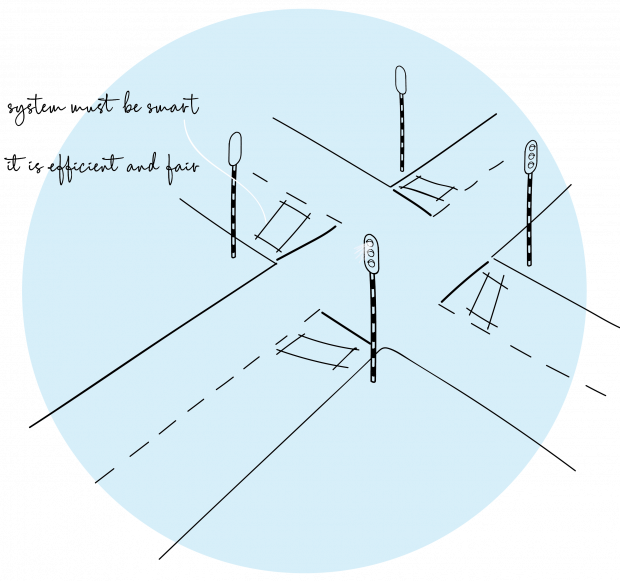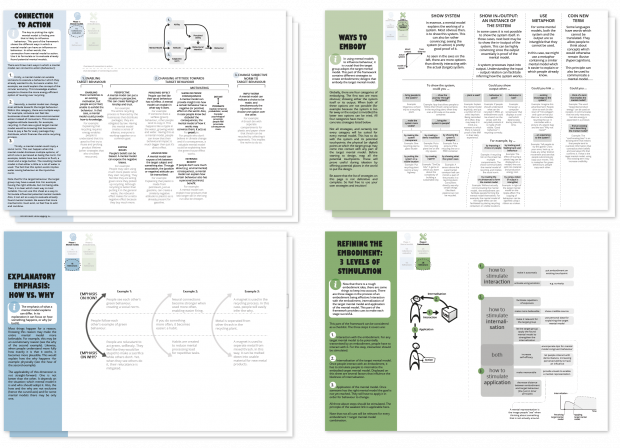By Ward van Hoeven
Opportunity
In this complex world that we live in, we are continually modeling what we see around -and within- us. Everyone has simplified explanations in their mind about how the things around them work. These mental models help people to interpret and predict. This guides emotional reactions and is fundamental to making choices on how to act. Therefore, if we could influence those mental models, we get a new handle on guiding behaviour. This project has explored exactly that handle as it investigated the questions:
How can we influence mental models through design? How can
those mental models influence behaviour?
An example
To get a feel for mental models and their effect, consider the following example: Imagine driving towards a red traffic light. Some people may become agitated or even run a red light. Yet there is a potential mental model that can mitigate this reaction: Most traffic lights in the Netherlands have a trigger in the road surface that senses whether a car is approaching. This data is input for scheduling the most efficient traffic flow. Knowing this (having a mental model that explains how it works) should make the system seem efficient and fair: You are not waiting for nothing. This creates more acceptance and less negative emotions –resulting in running less red lights. The visible triggers in the road (figure 1) are the designed element which evoke this mental model.

Figure 1. Traffic light sensors
As this example illustrates, the designed world influences people’s mental models -though not intentionally. This project uncovers the influence of mental models, enabling designers to be aware of it and even use it to change behaviour and increase well-being. This mental model approach may be more effective than other ways of (prescriptive) communication, since it does not preach on what to do. Instead, it allows for people to maintain a sense of autonomy, thus preventing resistance.
Approach
To answer the research questions, many examples of mental models and embodiments (designs that communicate them) were collected and analyzed. This resulted in identifying a wide range of types and dimensions of mental models and embodiments. These types and dimensions were collected in a framework (described in the section Project result).
Domain
In order to be able to define relevant mental models and embodiments, a domain was chosen. Together with the involved client (The National Institute for Public Health and the Environment -or RIVM) the domain was set on the circular economy.
Project result
The framework offers strategies to compose, evaluate and refine mental models and designs that embody them. It consists of 8 sheets (figure 2), divided over a mental model section (in blue) and an embodiment section (in green).

Figure 2. The framework
The framework
The framework takes designers through the process of choosing a mental model, optimizing it, translating it into a design and refining it. It guides the designer by, at each step, offering many strategies, variables to consider and success-factors for effective design -all including examples. For the full framework, please visit the link below*.
An example created with the framework: Embodying the ripple effect
Many people are demotivated to recycle because “other people don’t either, so why should I?”. Well, there is a reason and it is explained by the mental model of the ripple effect. This effect entails that good behaviour is perceived and copied by others and that it, in that way, spreads exponentially. A good behaviour therefore has a much bigger impact than only its direct effect. The ripple effect can be embodied by making recycling behaviour highly visible to others (see figure 3).
The mental model of the ripple effect shows one of then possible benefits of the mental model approach: It is broadly applicable. It is not specific for the domain of recycling -it is applicable on any good behaviour. Therefore, it can have a very large cumulative positive impact in the multitude of domains of life.

Figure 3. The ripple effect embodied
Concluding
This project has shown that there is potential in the mental model approach in design for behavioural change. The framework offers extensive handles on this process -for both designers as well as researchers. It has uncovered a new and exciting aspect of design, to be further tested and explored.
*You can find the toolkit here



